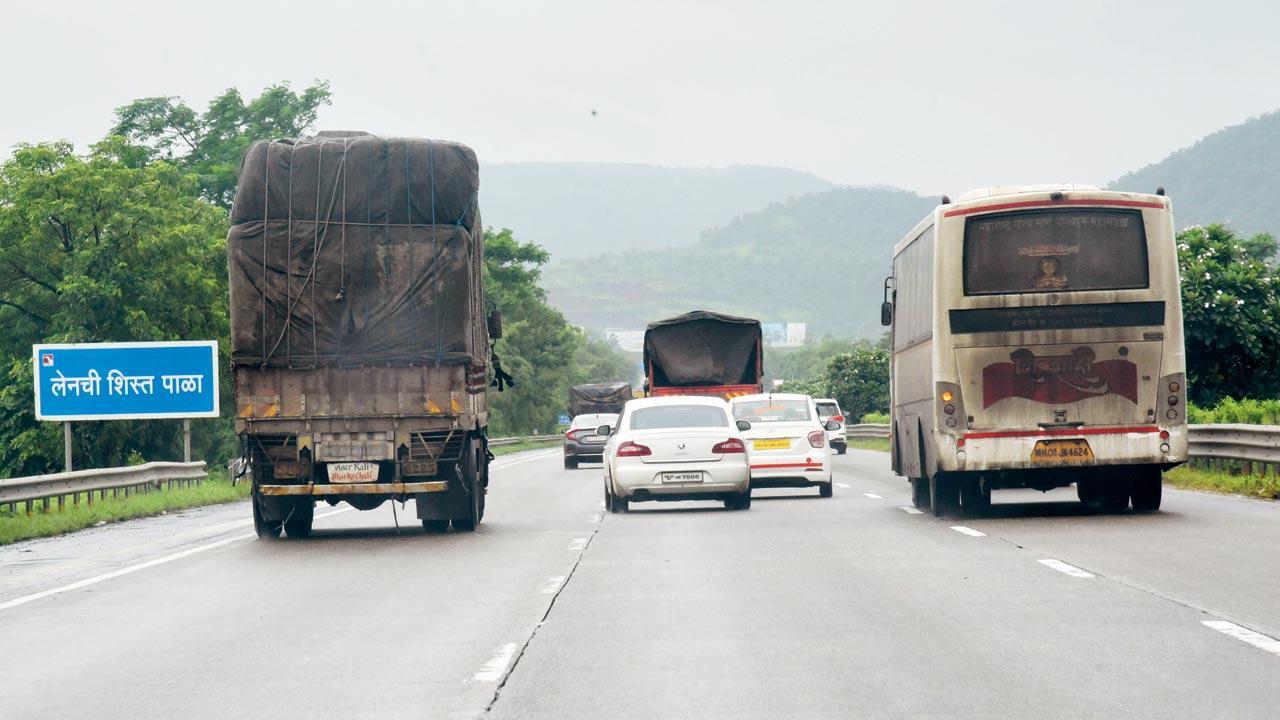Crash vulnerability audits, road assessment surveys, are among some of the other measures that have helped bring about change

Road safety audits helped identify 3,500 engineering issues on the Expressway, of which 2,800 were rectified. Pic/Sameer Markande
Key Highlights
- Mumbai-Pune Expressway continues to see fatalities but there has been a significant drop
- There has been 23 per cent drop in fatal crashes and 27 per cent decline in overall deaths
- The number of overall road crashes has also seen a drop of 23 per cent
The Mumbai-Pune Expressway continues to see fatalities but there has been a significant drop in the number of deaths over the past few years. The latest statistics released by the Regional Transport Office (RTO) reveal that there has been a 23 per cent drop in fatal crashes and a 27 per cent decline in overall deaths between 2019 and 2023 on the Expressway.
ADVERTISEMENT
The number of overall road crashes has also seen a drop of 23 per cent within that period. As per the data, in 2019 there were about 74 fatal crashes, which declined to 62 in 2020, rose to 71 in 2021 and 73 in 2023. As of November 2023, the number is 50. The number of fatalities in 2019 was 92, followed by 66 in 2020, 88 in 2021, 92 again in 2022 and 60 from January to November 2023.
Similarly, the number of total crashes (including fatal, those with serious injuries and minor injuries, have been down by 23 per cent with about 353 reported in 2019, 161 in 2020, 200 in 2021, 198 in 2022 and about 140 reported till November 2023.
SaveLIFE Foundation, which has been working on the Expressway to reduce crashes and fatalities, identified key reasons and interventions that have worked. A report titled ‘Road Safety Good Practices in India’, undertaken by the foundation with the World Bank Group and the Ministry of Road Transport and Highways, explores and documents replicable good practices aimed at curbing the alarming road crash statistics.
Piyush Tewari, founder and CEO of SaveLIFE Foundation, said, “Road crashes are a major concern, nationally, leading to an at least three per cent loss to GDP in low and middle-income countries. To address this issue, government, non-government and road users need to come together for solutions to save lives.”
Measures that were taken
To identify the reasons for crashes and deaths on the Expressway, on-site audits and forensic crash investigations were conducted.
Crash vulnerability audits were undertaken, and two road assessment surveys were conducted in 2016 and 2018. A comprehensive crash vulnerability audit was undertaken in 2022. These assessments, backed by in-depth crash data, involved video recording the entire 94.5-km length of the Expressway on both carriageways (a total of 189 km) and a detailed kilometre-by-kilometre assessment to identify infrastructural factors leading to crashes and injuries.
Four quarterly road safety audits were also conducted to highlight safety issues to help identify engineering issues. The audits helped identify 3,500 engineering issues, of which 2,800 were rectified.
Flowerpots led to deaths
At the inception of the project in 2016, flowerpots were initially placed on the median of the Expressway to create a prominent barrier between carriageways as well as improve aesthetics.
However, they were later identified as a risk factor and subsequently removed in 2017. They were replaced with median barriers that can absorb energy from crashes, reducing the impact of such crashes.
94.5 km
Length of Expressway
 Subscribe today by clicking the link and stay updated with the latest news!" Click here!
Subscribe today by clicking the link and stay updated with the latest news!" Click here!







